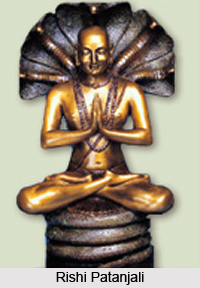 Regular practice of yoga asanas benefits the practitioner in various ways. Asana enables on to control mind; improves digestion; exercises spine; keeps nervous system in good condition and improves the working of several body systems. Yoga Asanas also boost oxygen flow throughout the body. Supply of oxygen to the body is completely dependent on the respiratory system. Lengthened deep and rhythmic breathing associated with each movement multiples the competence of respiratory system. Further, oxygen-rich blood is supplied to every tissue of the body and this in turn helps the body to be healthy. These help to strengthen the muscular system as well. The various postures ensure that every part of body, even the smallest gland, receives proper attention. The aim of yoga asanas is to achieve strength and to promote health. Lack of motion in the joints can lead to their mal-adjustments and degeneration. Stretching and contracting postures make muscles strong and healthy. It is scientifically proved that the effort given to practice yoga asanas can bring about maximum contractibility of the entire muscular system and consequently raise the tone and increase efficiency. When this simple truth is applied to internal organs, physical efficiency is gradually multiplied and the height of biological perfection is achieved.
Regular practice of yoga asanas benefits the practitioner in various ways. Asana enables on to control mind; improves digestion; exercises spine; keeps nervous system in good condition and improves the working of several body systems. Yoga Asanas also boost oxygen flow throughout the body. Supply of oxygen to the body is completely dependent on the respiratory system. Lengthened deep and rhythmic breathing associated with each movement multiples the competence of respiratory system. Further, oxygen-rich blood is supplied to every tissue of the body and this in turn helps the body to be healthy. These help to strengthen the muscular system as well. The various postures ensure that every part of body, even the smallest gland, receives proper attention. The aim of yoga asanas is to achieve strength and to promote health. Lack of motion in the joints can lead to their mal-adjustments and degeneration. Stretching and contracting postures make muscles strong and healthy. It is scientifically proved that the effort given to practice yoga asanas can bring about maximum contractibility of the entire muscular system and consequently raise the tone and increase efficiency. When this simple truth is applied to internal organs, physical efficiency is gradually multiplied and the height of biological perfection is achieved.
However, there are a number of factors that should be considered while practicing yoga asanas. Children up to the age of 5 years should not practice yoga asana. Between the age of 5 to 10 years, children should practice meditative poses for controlling their mind. Children between the ages of 10 to 16 year are considered to be in a period for rapid growth of height and weight. Hence they should do meditative as well as cultural asana. Upto 40 years all the yoga asanas can be practised. After middle age, yoga postures that strain the muscles should not be practiced.
 Practicing yoga asanas should also follow a proper procedure to attain best results. Yoga Asanas should be done in a quiet and well-ventilated place. Quiet place helps for more concentration on co-ordination between breathing and body movement. Well ventilated place provides fresh air and asana should be done with an uninterrupted and quiet mind. Hence, it is better to start with any meditative asana like sukhasana, vajrasana and so on. During asana concentration should be on the movement. Each asana should be done with complete attachment of mind. Nose and throat should be cleaned of all mucus before practicing asana so that breathing during asana remains comfortable.
Practicing yoga asanas should also follow a proper procedure to attain best results. Yoga Asanas should be done in a quiet and well-ventilated place. Quiet place helps for more concentration on co-ordination between breathing and body movement. Well ventilated place provides fresh air and asana should be done with an uninterrupted and quiet mind. Hence, it is better to start with any meditative asana like sukhasana, vajrasana and so on. During asana concentration should be on the movement. Each asana should be done with complete attachment of mind. Nose and throat should be cleaned of all mucus before practicing asana so that breathing during asana remains comfortable.
The best time for practicing asana is in the morning. It should be practiced before having breakfast as at this time the energy is at the highest and therefore, the movements can be done with ease and freshness. Further, mind is calm during this time. Asana can also be done in evening before the dinner. Yoga asana should strictly not to be practiced after taking food. Using mat or woolen carpet is preferred while practicing asana as these ensures uniformity of temperature by insulation against ground contact. Before commencing yoga asanas, it is advisable to empty the bladder and the bowels, and drink a glass of water neither too hot nor too cold. Then, after fifteen minutes, one can begin with the yoga asanas. What needs emphasis is the fact that asanas need to be followed with particular enthusiasm and regularity during winter to maintain normal blood circulation and to keep the blood warm.
Yoga postural pattern play a vital role in yoga and is of greater significance with the effect of physical training on the nervous system. In Yoga, the physical body merely serves as a medium of education for the mind, and the nervous system, thus, assumes paramount importance. All the yoga asanas or postures, thus, aim at controlling, purifying and coordinating the nervous system rather than at muscular display and strength. They aid in achieving poise and controlling the body and the mind through non-fatiguing methods.



